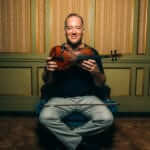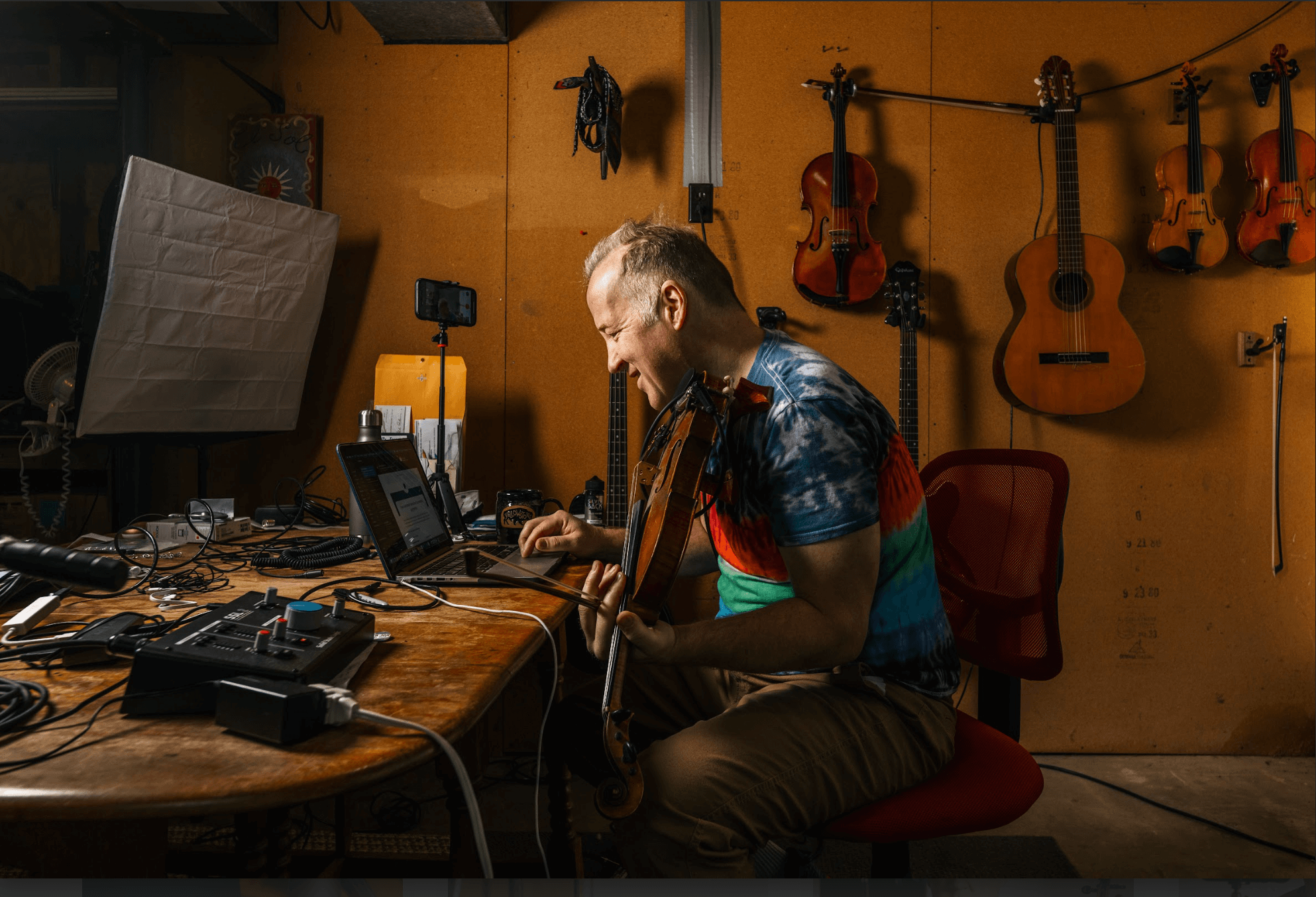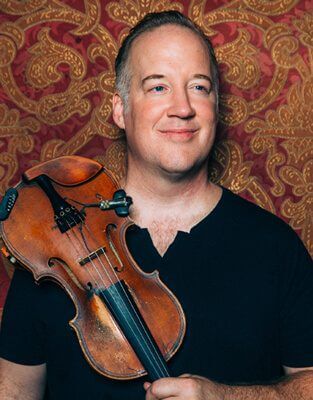Welcome, fellow music enthusiasts and aspiring jazz violinists! In today’s jazz violin lesson, we’ll embark on an exciting journey to unlock the secrets of Django Reinhardt’s Jazz Manouche masterpiece, “Nuages.” As we delve into the intricacies of this timeless jazz composition, you’ll discover that it’s not as daunting as it may seem. With a patient approach and a keen ear, you’ll soon be playing this jazz standard with confidence and finesse.
🎥 Don’t Just Read—Play Along!
Before we dive into the details, we invite you to watch our interactive Nuages play along video. This jazz violin lesson video allows you to play along, practice, and learn all the concepts described in this post. Simply click the video above, grab your violin, and let’s get started!
👉 Watch the Interactive Video Lesson
👉 Get the chords of the song here

Understanding “Nuages” for Jazz Fiddle Players:
“Nuages” is a jazz gem that often intimidates even seasoned musicians. The reason many struggle with tunes like “Nuages” is that they often avoid confronting the tricky spots. Just as in a concerto, identifying the practice spots is crucial for jazz mastery. As with any musical challenge, the key to success lies in tackling the problem areas head-on.
Strategy for the First Three Bars:
Understanding “Nuages” for Jazz Fiddle Players- Adapting to the Triplets:
Feel free to experiment with your bowing technique to add your unique touch to the melody. Becoming comfortable with triplets is crucial, as jazz thrives on rhythm and groove.
The Intricacies of Progression:
Progressing through “Nuages,” we’ll face new challenges, including a 2-5-1 progression in E Minor. Embrace the F#m7(b5) chord and visualize it as “a minor six” for clarity. As you navigate through B7 with a flat nine resolving to E minor and other transitions, practice voice-led arpeggios.
The Final Stretch:
Tackling A7, A-flat seven, A7, and D7 each on their own terms is essential. Arpeggios will be your reliable companions in navigating these changes.
Key Takeaways
- Embrace the Challenge: Jazz is all about embracing complexity. Conquer the tricky spots in “Nuages” to set yourself on the path to mastery.
- Strengthen Your Fundamentals: A strong foundation is essential in jazz. Master arpeggios, understand harmonic structures, and use them as a launching pad for improvisations.
- Unleash Your Creativity: Jazz offers freedom within intricate progressions. Explore and experiment, blending challenge and artistic expression to make “Nuages” your masterpiece.
Your Jazz Violin Journey
Jazz fiddle players, keep your bows moving and embrace the challenging passages. Let your unique voice shine through, and remember that learning these foundational harmonies well can serve you in expressing your originality.
FAQs:
1. What are some advanced techniques used in “Nuages” jazz violin performance?
Advanced techniques in “Nuages” include intricate bowing patterns, advanced fingerings for challenging passages, and expressive vibrato techniques. These elements help capture the essence of this jazz masterpiece.
2. How can I develop my improvisational skills on the violin for jazz music?
To enhance your improvisational skills, practice scales and arpeggios in various keys, study jazz theory, transcribe solos from jazz greats, and participate in jam sessions or online collaborations to apply your skills in a real-time context.
3. Are there any specific recommendations for mastering Django Reinhardt’s style on the violin?
Django Reinhardt’s style can be challenging to replicate on the violin, but it’s achievable. Focus on gypsy jazz techniques like “gypsy picking,” work on the swing feel, and experiment with ornamentations such as trills and slides to capture his unique style.
4. How can I incorporate “Nuages” into my jazz violin repertoire effectively?
Start by mastering the basic melody and chord progressions. Then, experiment with improvisation over the tune, explore different interpretations, and adapt it to your personal style. Regular practice and listening to various renditions can help refine your performance.
5. What are the fundamental techniques needed to play “Nuages” on the violin?
Fundamental techniques include proper bowing and fingering, mastering vibrato for expression, and understanding key signatures and time signatures.
6. How do I tackle challenging chord progressions in “Nuages”?
Break down complex progressions into arpeggios and scales to target chord tones. Practice transitioning between chords smoothly and experiment with variations to find what works best for you.
7. What’s the significance of mastering triplets in jazz violin performance?
Triplets are crucial in jazz as they contribute to the swing feel. Focus on playing triplets evenly and in time to maintain the groove of the music.
8. How can I improve my bowing technique for jazz violin?
To enhance your bowing technique, practice bow control exercises, experiment with different bow strokes (e.g., staccato, legato), and play with a mezzo piano feeling in your right arm so you prioritize groove and rhythm rather than devoting so much energy to projection.
9. What are some effective practice strategies for mastering “Nuages” on the violin?
Effective practice strategies include breaking the piece into smaller sections, practicing slowly with a metronome, recording your practice sessions to identify areas for improvement, and seeking guidance from an instructor.






